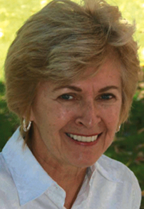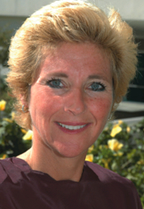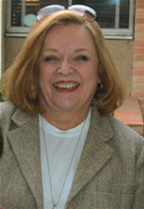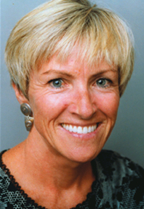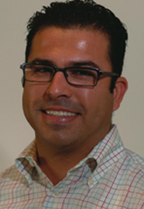Health Matters
CSUF contributes to well-being through education, research, outreach and service
October 29, 2007
By Mimi Ko Cruz
Americans are getting fatter, and sicker as a result.
More than half the adults in the United States are overweight or obese, according to researchers and healthcare providers who are alarmed by the growing trend because of all the havoc it causes health-wise.
Studies show that obesity
can cause heart disease, diabetes, a shortened life expectancy and all
sorts of health-related problems.
“It’s a serious crisis in this nation and we want to do everything
we can to combat obesity by promoting healthy lifestyles,” said
Roberta E. Rikli, dean of the College of Health and Human
Development.
That is the goal of Cal State Fullerton’s Center for the Promotion of Healthy Lifestyles and Obesity Prevention. Its director, Shari McMahan, chair and professor of health science, said the center promotes interdisciplinary research and community outreach in areas related to children’s health and weight management and facilitates interaction among multiple groups, including faculty, schools, community agencies and policymakers concerned with the rise in children’s obesity. More specifically, she said, the center works with schools and other community agencies to develop and test model health promotion programs and interventions, to assess and evaluate existing programs and policies and to identify theoretical models and environments that can explain and influence behavior patterns across different high-risk groups.
“Most health-related
illnesses are
lifestyle related.”— Roberta E. Rikli
Besides addressing America’s obesity crisis, CSUF also tackles myriad health-related issues. Professors, students and staff members in several disciplines are conducting research and taking part in outreach services on everything from AIDS and Alzheimer’s disease to cancer, nutrition and psychology.
Some examples of the work being done on and off campus include:
- McMahan and Gail Love, assistant professor of communications, are informing Latina mothers about the benefits of breastfeeding through a 10-minute Spanish-language film they wrote and produced to combat childhood obesity.
- C. Jessie Jones, professor of health science, director of the Fibromyalgia Research and Education Center and co-director of the Center for Successful Aging, works with the National Fibromyalgia Association to find relief for sufferers of fibromyalgia and overlapping medical conditions through research and outreach services.
- Davina C. Ling, assistant professor of economics, is exploring how wealth affects the health of the Chinese. She is using data collected by researchers from the University of North Carolina, National Institute of Nutrition and Food Safety and the Chinese Center for Disease Control and Prevention to examine how being poor affects measures of health, such as body mass index, waist circumference and blood pressure. She also studies various healthcare issues as they affect the elderly and obese children.
- Sora Park Tanjasiri, associate professor of health science and director of CSUF’s Center for Cancer Disparities Research, is helping bring together Pacific Islander community organizations to decrease cancer disparities among native Hawaiians, Chamorros, Tongans, Samoans and the Marshallese. She is developing grant proposals for data analysis on mortality rates among Pacific Islanders, studying their physical activity and nutrition needs and planning intervention campaigns. She also is studying the needs of Samoan breast cancer survivors and looking at the occurrence of lymphedema among Chamorro breast cancer survivors.
- Marcelo Tolmasky, professor of biological science, is researching strategies to extend the life of existing drugs to make them more resistant to bacteria because “in the United States, many people are dying from diseases that they shouldn’t be dying from.”
- Through her work as co-director of the Center for Successful Aging, Debra Rose promotes health, vitality and wellbeing for the elderly as part of an initiative to develop a statewide infrastructure for services and programs designed to reduce falls. Rose also heads up the university’s Fall Prevention Center of Excellence.
- Through their coursework, nursing, social work, psychology, counseling, kinesiology, education and health science students, serve in internships or community programs that help the sick and mentally and emotionally unstable.
- Hundreds of students, staff and faculty volunteers donate their time helping health-related causes by raising funds for heart disease, AIDS and Alzheimer’s research.
In addition, Erualdo R. González, assistant professor of Chicana and Chicano studies, is preparing to teach a special course, “Barrios and Health,” next fall. For the class, his students will participate in fieldwork to learn how health issues are defined and experienced by community members and to provide useful assistance to the community they survey.
“Most health-related illnesses are lifestyle-related,” Rikli said. “With all the new technology being introduced, we’re tempted to sit in front of our computers and spend more time away from physical activity. We’re also tempted by convenient fast food that is so high in fat and calories. The combination of so much sedentary time and junk food hits most of us so it is more important now than it ever has been before that we pay attention to our health, nutrition and physical fitness.”
America's Health Stats at a Glance
In 2005, 25.6 million American adults were living with heart disease.
In 2005, an estimated 37,330 Americans were diagnosed with HIV or AIDS.
Of 2.4 million Americans in 2004, 652,486 died of heart disease, 553,888 died of cancer, 150,074 died of stroke, 121,987 died of chronic lower respiratory diseases, 73,138 died of diabetes and 65,965 died of Alzheimer’s disease.
In 2004, 66 percent of all 22 to 74 year olds in the United States were overweight or obese.
In Orange County from 2002 to 2004, there was an 18.8 percent increase in overweight children ages 0 to 4. For 5 to 11 year olds, the increase was 9.7 percent and for 12 to 19 year olds, the increase was 13.1 percent. Asian and Pacific Islander children had the greatest increase, at more than 25 percent in all three age groups.
During the 1999-2000 school year, there were 8,376 (422 percent more than during the 1992-93 school year) autistic children in California.

